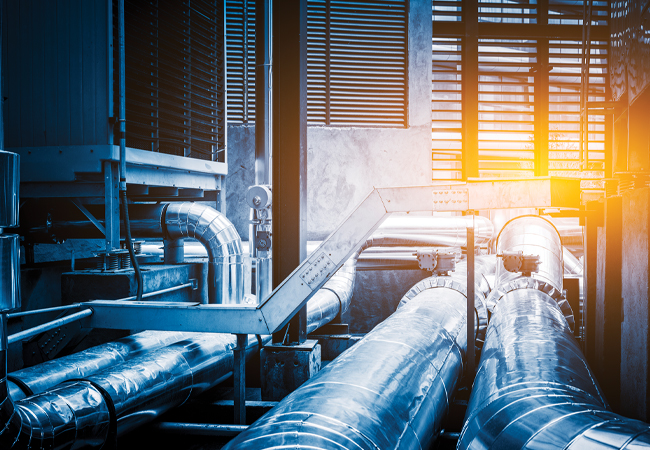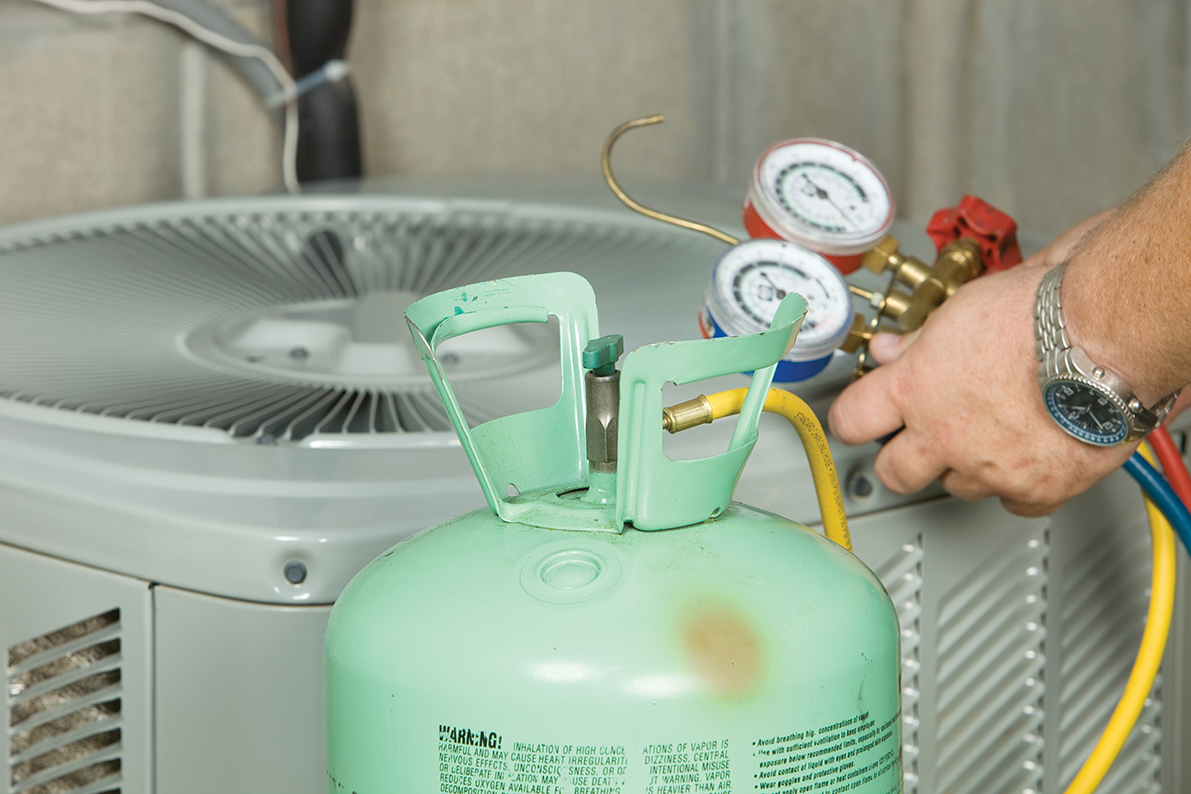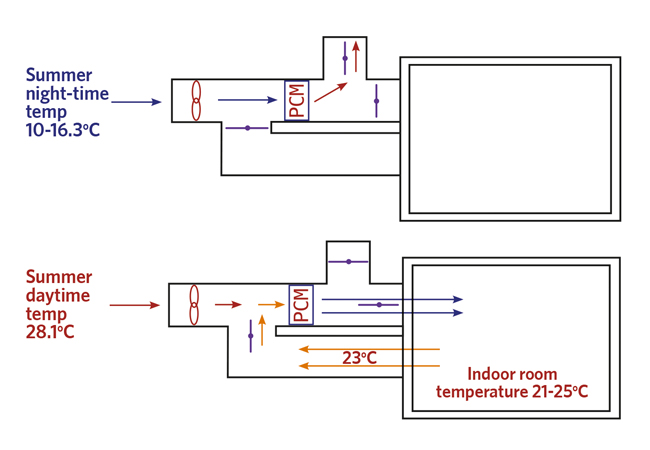
Cooling is essential; it keeps vaccines safe, food fresh and buildings comfortable. It is also energy intensive; the electrical energy used by cooling equipment accounts for more than 7% of global greenhouse gas emissions. These emissions are increasing rapidly, which is why the Carbon Trust has published The Climate Action Pathway for Net Zero Cooling by 2050 (The Pathway). Co-authored by the Carbon Trust, Cool Coalition, Kigali Cooling Efficiency Program, Oxford University and High-Level Champions, The Pathway describes a vision of net-zero cooling in 2050 achieved through actions focused on three key areas:
A ‘race to the top’ for super-efficient equipment and appliances powered by zero carbon energy, which ‘will build on efforts to set minimum energy performance standards for key cooling equipment and appliances’. High-efficiency urban cooling solutions, such as district cooling, are expected to be deployed widely in high cooling-density areas. In addition, by 2050, the document says ‘cooling will support the resilience of the energy system, including through the use of waste heat and cold, and provision of flexibility through ice, liquid air and other solutions to help with energy storage and load shifting’.
A market dominated by ultra-low global warming potential (GWP) refrigerants (<5) across applications, aided by harmonised and adapted safety standards and regulations, to allow use of all refrigerants.

The widespread adoption of passive cooling. By 2050, every building will incorporate passive cooling measures, which The Pathway says ‘will range from shading, glazing, thermal mass and cool roofs to ventilation, green walls and roofs, and evaporative and radiative cooling’.
While net-zero compatible cooling technologies already exist, the authors say ‘these aren’t being implemented, used or scaled at the pace required to achieve net-zero cooling by 2050’. Barriers include: policy and political will; finance and economic; technology and innovation; business commitments and supply chain readiness; and a lack of understanding of how to decarbonise the sector. Ultra-low GWP refrigerants exist across nearly all sectors, the report says, but there are significant hurdles to their deployment including safety concerns and a lack of skilled workforce.
To realise the vision, The Pathway includes a Net Zero Cooling Action Plan that sets out what needs to be done globally to overcome the barriers. The most significant actions for each key area are summarised below.
Super-efficient equipment and appliances
By 2021
- Governments join the Biarritz Pledge for Fast Action on Efficient Cooling, to transform the global sector and lower emissions by coordinating efforts to improve the energy efficiency of air conditioners and other cooling equipment, in parallel with the phase down of HFCs
- Investors commit to disengage from financing cooling manufacturers that have not made a net-zero pledge
- Leading cooling suppliers commit to net-zero targets
- Leading cooling suppliers support ‘product performance ladders’ and GWP limits for net-zero cooling products
- Waste cooling is used and delivered to district energy networks to meet cooling loads, where cost effective.
By 2025
- Large-scale public sector procurement for super-efficient equipment and appliances
- Significant adoption of district cooling in leading regions in cooling-dense applications
- Majority of cooling suppliers and operators committed to net-zero cooling targets
- All cooling suppliers and operators committed to product performance ladders
- Businesses invest in resources and skills to operate systems at maximum efficiency and increase energy savings with optimal control settings.
By 2030
- Enhanced product performance ladders, labels and incentives in force for 80% of the global market
- Scale up of district cooling beyond main regions
- Leading investors stop financing businesses that have not made net-zero cooling commitments
- Waste cooling optimised and recycled within industry
- Only net-zero compatible cooling products are sold.
By 2040
- Enhanced product performance ladders, labels and incentives consistent with net-zero cooling in place for all cooling technologies and regions
- District cooling adopted as the norm for all cooling-dense applications globally, as appropriate
- Finance only flows to super-efficient, ultra-low GWP products and investments
- New technologies and business models make super- efficient, ultra-low GWP equipment and appliances cheaper in most applications.
Ultra-low GWP refrigerants
By 2021
- New commitments from countries on uptake of ultra-low GWP refrigerants beyond Kigali Amendment
- Nations agree to work together and invest additional funds in F-Gas market surveillance, compliance and enforcement, and to review building codes and standards that stifle the use of ultra-low GWP net-zero products
- Cooling businesses commit to minimising refrigerant leakage and decommissioning at end of life, including recovery, recycling and destruction of refrigerants and ozone-depleting substances, and HFC-containing foams
- Businesses in the largest cooling-consuming sectors commit to only buy low GWP refrigerant solutions
- Equipment and refrigerant manufacturers commit to increased R&D, and to supporting an ‘Ultra-low GWP Cooling Accelerator’ to identify solutions for hard-to-achieve applications (air con, industry, transport)
- Accelerated development of novel financing mechanisms and instruments for net-zero compatible cooling by Development Finance Institutions.
By 2025
- All countries ratified the Kigali Amendment
- Large-scale public sector procurement for equipment and appliances using ultra-low GWP refrigerants
- Investors commit to only fund manufacturers of ultra-low GWP refrigerants
- Operators trained to reduce refrigerant leakages and to decommission high-GWP refrigerants at end of life, including recovery, recycling and destruction of refrigerants and ozone-depleting substances and HFC-containing foams
- Pressure from civil society reduces manufacturing of high-GWP appliances.
By 2030
- Product performance ladders for cooling technologies mandate use of ultra-low GWP
- Investors only fund ultra-low GWP refrigerant manufacturing
- Refurbishment of cooling technologies with ultra-low GWP options occurs at scale across nations
- Most businesses commit to ultra-low GWP refrigerant
- Cooling equipment is decommissioned, with refrigerants treated in an environmentally friendly way, including recovery, recycling and destruction.
By 2040
- Updated Kigali Amendment has delivered ultra-low GWP cooling
- All investors only fund ultra-low GWP net-zero cooling solutions
- Business commits to ultra-low GWP refrigerant solutions
- All purchased appliances use ultra-low GWP refrigerant.
Passive cooling
By 2021:
- Cities commit to integrate passive cooling into masterplans
- Revise building regulations to promote passive cooling
- R&D on innovative passive cooling in new and existing buildings
- Develop in-house technical capability on how to first avoid the need for cooling, before including cooling technologies into buildings.
By 2025:
- Passive cooling considerations included in climate-risk appraisals to disincentivise investment in thermally inefficient buildings
- Passive cooling solutions being demonstrated at scale
- New behaviour-change campaigns launched
- Optimising cooling demand at design stage is a development practice.
By 2030
- All new buildings and urban areas are required to incorporate passive cooling measures through building regulations
- City masterplans with defined Local Climate Zones are enforced
- Passive cooling measures shown to have largest impact are deployed in countries with highest cooling need.
By 2040
- Buildings refurbished to passive cooling standards
- Passive cooling building regulations enforced
- City-level projects only approved if they optimise passive cooling
- Passive cooling the norm and first cooling priority measure in all countries. CJ
References:
- Based on initial outputs of the Cool Coalition’s Cool Calculator tool, available 2021, October 2020 bit.ly/CJMay21CC




